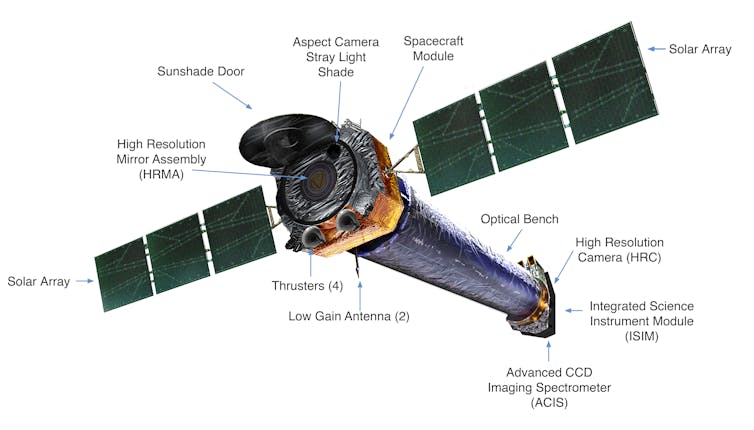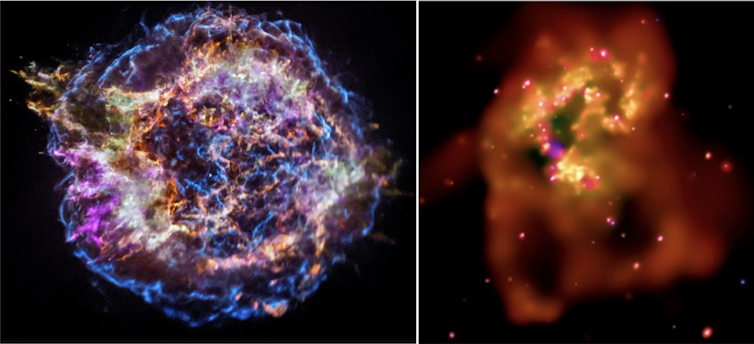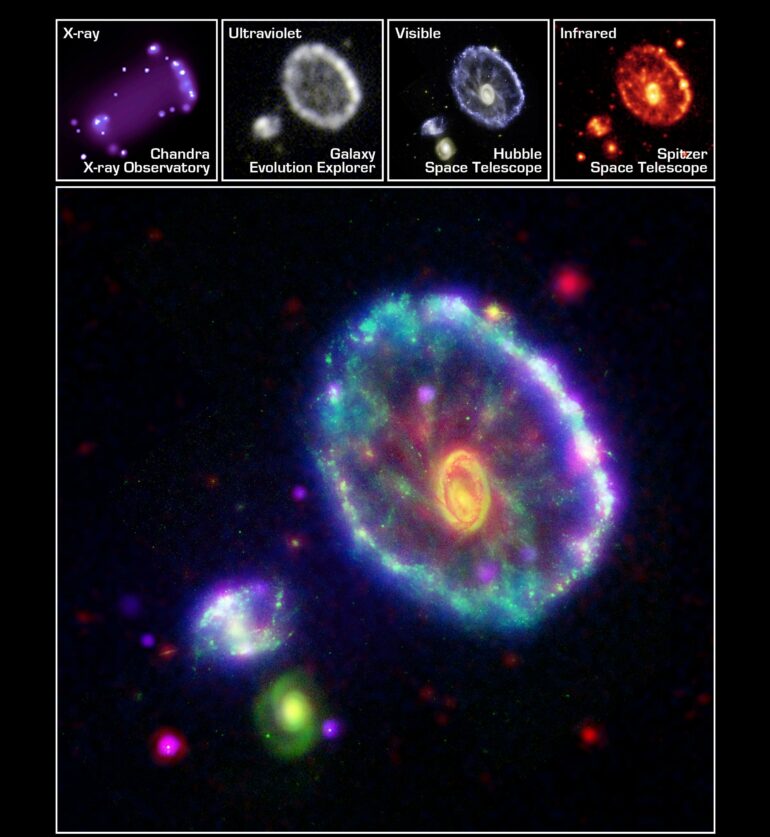When a star is born or dies, or when any other very energetic phenomenon occurs in the universe, it emits X-rays, which are high-energy light particles that aren’t visible to the naked eye. These X-rays are the same kind that doctors use to take pictures of broken bones inside the body. But instead of looking at the shadows produced by the bones stopping X-rays inside of a person, astronomers detect X-rays flying through space to get images of events such as black holes and supernovae.
Images and spectra – charts showing the distribution of light across different wavelengths from an object – are the two main ways astronomers investigate the universe. Images tell them what things look like and where certain phenomena are happening, while spectra tell them how much energy the photons, or light particles, they are collecting have. Spectra can clue them in to how the event they came from formed. When studying complex objects, they need both imaging and spectra.
Scientists and engineers designed the Chandra X-ray Observatory to detect these X-rays. Since 1999, Chandra’s data has given astronomers incredibly detailed images of some of the universe’s most dramatic events.

The Chandra spacecraft and its components.
NASA/CXC/SAO & J.Vaughan
Stars forming and dying create supernova explosions that send chemical elements out into space. Chandra watches as gas and stars fall into the deep gravitational pulls of black holes, and it bears witness as gas that’s a thousand times hotter than the Sun escapes galaxies in explosive winds. It can see when the gravity of huge masses of dark matter trap that hot gas in gigantic pockets.

On the left is the Cassiopeia A supernova. The image is about 19 light years across, and different colors in the image identify different chemical elements (red indicates silicon, yellow indicates sulfur, cyan indicates calcium, purple indicates iron and blue indicates high energy). The point at the center could be the neutron star remnant of the exploded star. On the right are the colliding ‘Antennae’ galaxies, which form a gigantic structure about 30,000 light years across.
Chandra X-ray Center
NASA designed Chandra to orbit around the Earth because it would not be able to see any of this activity from Earth’s surface. Earth’s atmosphere absorbs X-rays coming from space, which is great for life on Earth because these X-rays can harm biological organisms. But it also means that even if NASA placed Chandra on the highest mountaintop, it still wouldn’t be able to detect any X-rays. NASA needed to send Chandra into space.
I am an astrophysicist at the Smithsonian Astrophysical Observatory, part of the Center for Astrophysics | Harvard and Smithsonian. I’ve been working on Chandra since before it launched 25 years ago, and it’s been a pleasure to see what the observatory can teach astronomers about the…



